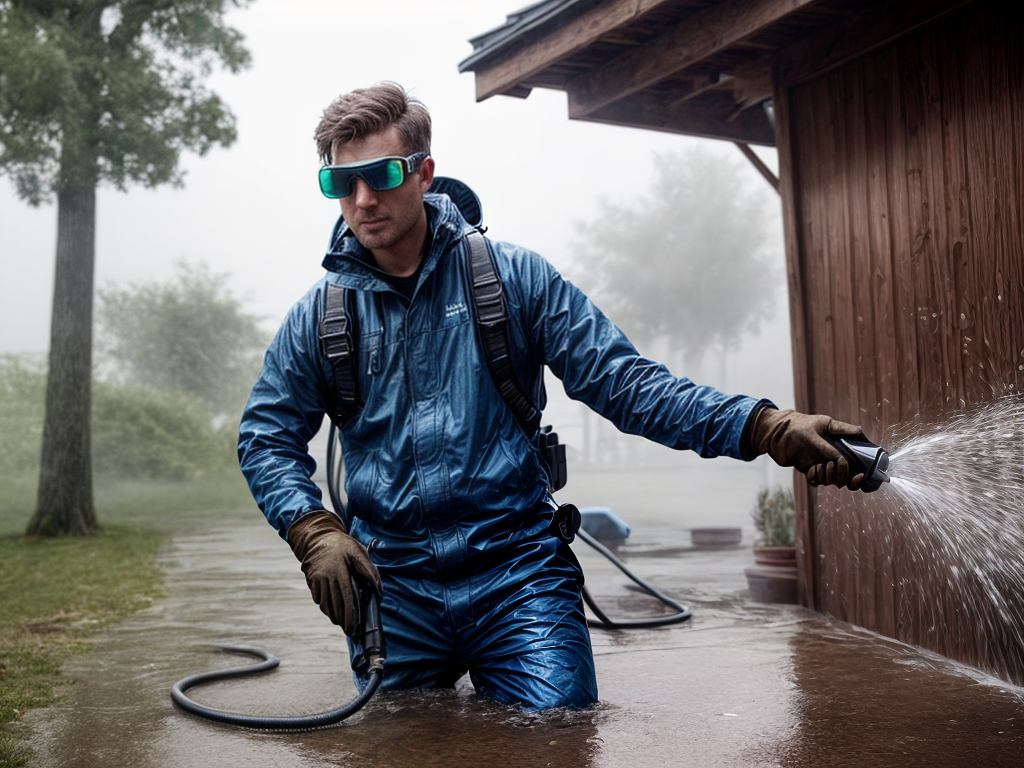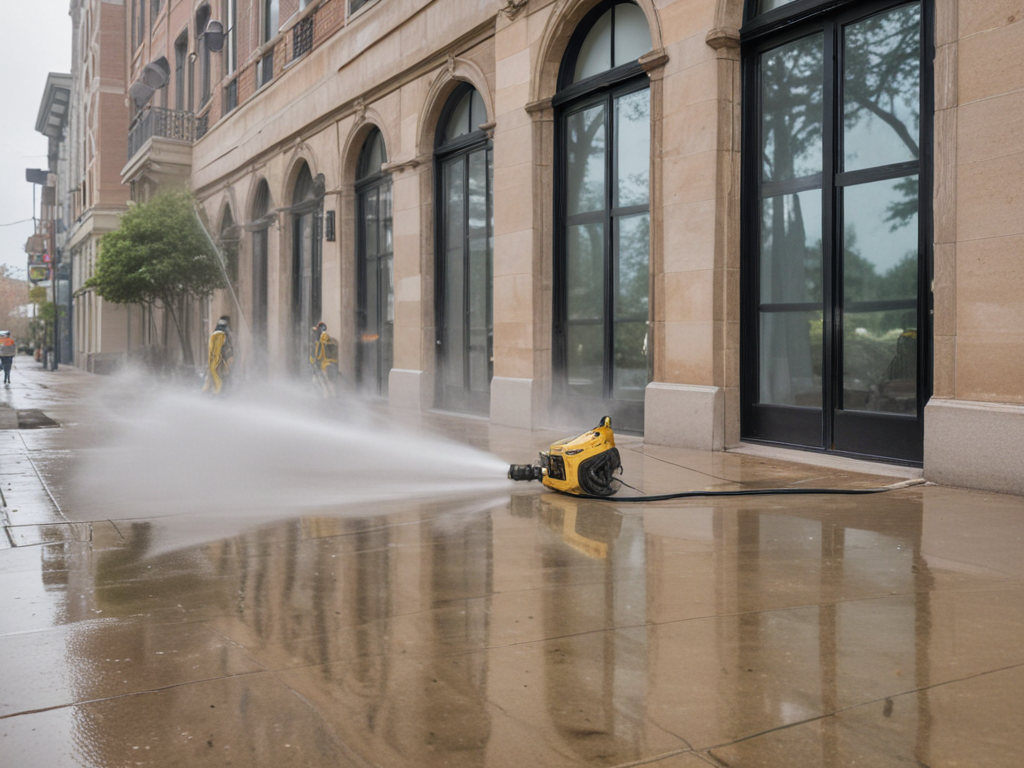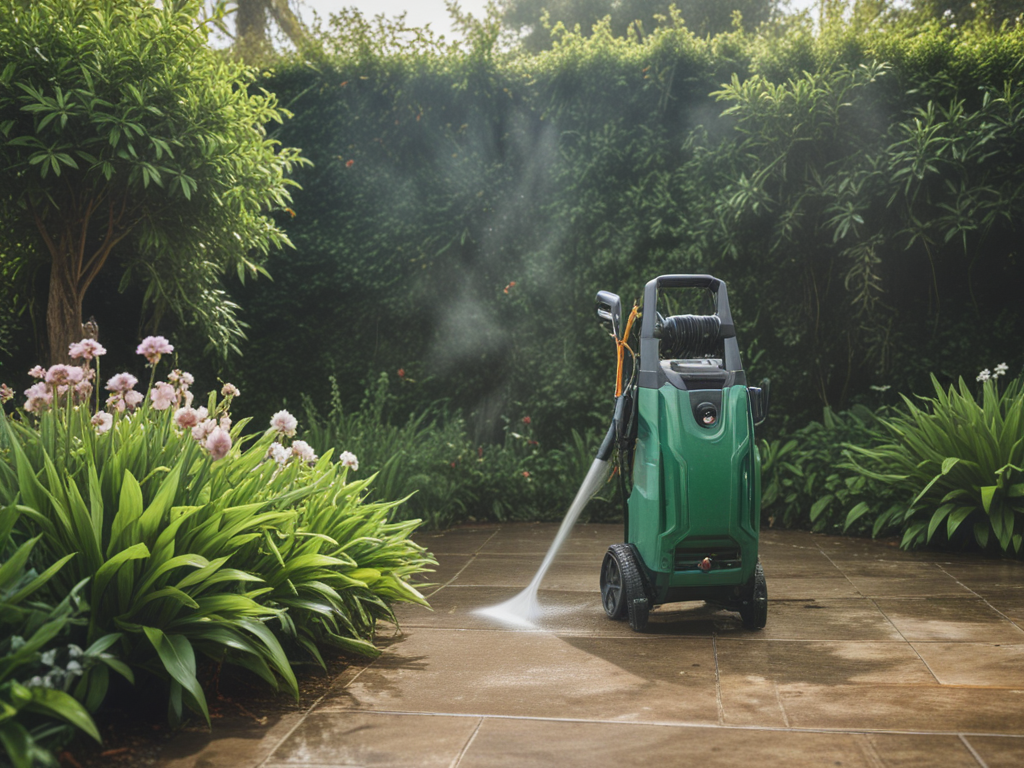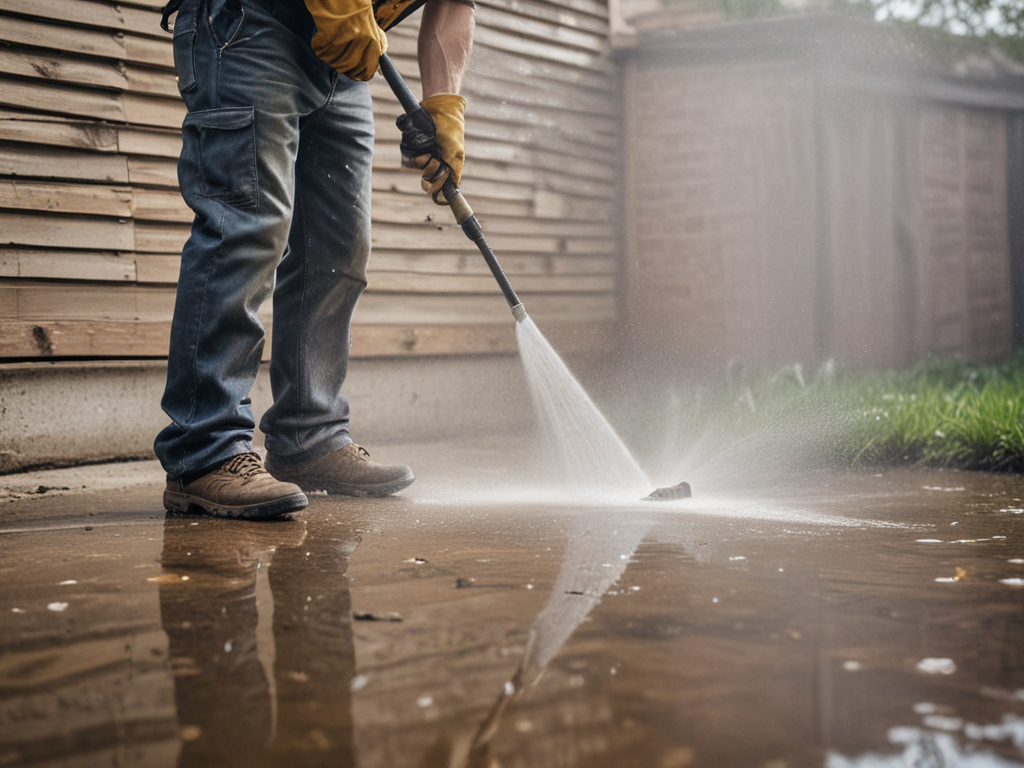
When I first tried pressure washing my patio, I was amazed at the transformation it underwent in just a few minutes. However, I quickly realized there was more to it than just pointing the nozzle and spraying. Understanding the right techniques, equipment, and safety measures is crucial for optimal results. If you’re wondering about the best surfaces to pressure wash, how to avoid common mistakes, or how to maintain your pressure washer effectively, this guide will provide you with the essential knowledge to tackle your next cleaning project with confidence.
Key Takeaways
- Benefits include quick dirt removal, cost savings, and enhanced appearance.
- Essential equipment: pressure washer, safety gear, proper detergent, and cleaning tools.
- Safety precautions: eye, foot, and hand protection, risk assessment, and surface-specific precautions.
- Cleaning solutions: citrus cleaners, oxygen bleach, mild detergents, and eco-friendly options.
Benefits of Pressure Washing
Pressure washing offers a quick and efficient way to remove dirt and grime from various surfaces. It’s like a superhero cleaning squad for your home or business! Not only does pressure washing leave your surfaces sparkling clean, but it also brings along some fantastic benefits. Let’s talk about the environmental perks first. By using high-pressure water to clean, pressure washing reduces the need for harsh chemicals that can harm the environment. It’s a win-win – you get a clean surface, and Mother Earth gets a little love too!
Now, onto the cost savings benefits. Who doesn’t love saving some cash, am I right? Pressure washing helps prolong the life of your surfaces by removing built-up dirt and grime that can cause damage over time. This means you won’t have to shell out big bucks for repairs or replacements down the road. So, not only does pressure washing make your surfaces look amazing, but it also helps you save money in the long run. Who knew cleaning could be so rewarding?
Equipment Needed for Pressure Washing
When it comes to pressure washing, having the right equipment is crucial. Essential tools like a pressure washer, nozzles, and extension wands are necessary for effective cleaning. Additionally, safety gear such as goggles, gloves, and non-slip footwear should always be worn to protect yourself during the process. Remember to choose the right detergent based on the surface you are cleaning to achieve the best results.
Essential Tools for Pressure Washing
Ready to tackle your next pressure washing project? Let’s make sure you have all the essential tools on hand. First up, you need a trusty pressure washer. Make sure it delivers the right water pressure for the job, not too weak like a sad sprinkle or too strong like a water jetpack. Next, grab a good ol’ scrub brush for those tough spots that need some extra elbow grease. A bucket and cleaning solution are must-haves for mixing up a powerful cleaning cocktail. Don’t forget about a sturdy ladder to reach those high places – safety first, folks! Lastly, keep some extra nozzles handy for different cleaning techniques, from gentle rinses to powerful blasts. Now, let’s get that grime-busting party started!
Safety Gear Requirements
Strap on your safety gear before diving into your pressure washing project to ensure protection from potential hazards. When gearing up for this sudsy adventure, remember these safety gear essentials and proper attire recommendations:
- Safety Glasses: Shield those peepers from flying debris and splashing water.
- Rubber Boots: Keep those toes dry and well-protected from slippery surfaces.
- Gloves: Protect your hands from chemicals and high-pressure water.
- Ear Protection: Block out the roar of the pressure washer for a more peaceful cleaning experience.
With these safety precautions in place, you’ll be ready to tackle your pressure washing tasks like a pro! Remember, safety first, fun second!
Choosing the Right Detergent
Before starting your pressure washing project, one essential aspect to consider is selecting the right detergent, vital for achieving optimal cleaning results. When it comes to detergent selection, it’s not just about grabbing any soap you have lying around. You need to think about the surface you’re cleaning and the type of dirt or grime you’re dealing with. Here’s a handy guide to help you choose the right detergent for the job:
| Surface Type | Recommended Detergent | Cleaning Effectiveness |
|---|---|---|
| Concrete | Concrete Cleaner | High |
| Wood Deck | Deck Cleaner | Medium |
| Vehicles | Car Wash Soap | Gentle |
Best Surfaces to Pressure Wash
When considering the best surfaces to pressure wash, it’s crucial to identify ideal surface types that can withstand the high-pressure cleaning. Safety precautions should always be a top priority to avoid damaging delicate surfaces or causing injury. Additionally, using the appropriate cleaning solutions recommended for each surface type can enhance the effectiveness of pressure washing.
Ideal Surface Types
Selecting the right surface types is crucial when determining the best areas to pressure wash for optimal results. When it comes to ideal surfaces for pressure washing, consider the following:
- Concrete driveways: Perfect for removing oil stains and dirt buildup, leaving them looking fresh and clean.
- Wooden decks: Pressure washing can help revive the wood’s natural color and remove grime, mold, and mildew.
- Brick walls: Ideal for restoring the original charm of brickwork, removing dirt and weathering effects.
- Vinyl siding: Pressure washing can quickly and effectively remove dirt, mold, and algae, restoring the siding’s appearance without damaging it.
Choose these surfaces for a satisfying pressure washing experience that will make your space look brand new!
Safety Precautions Advised
Ensuring safety during pressure washing is paramount, especially when tackling surfaces like concrete driveways, wooden decks, brick walls, and vinyl siding. Before starting any project, it’s crucial to conduct a thorough risk assessment to identify potential hazards. Proper gear is essential to protect yourself from flying debris, chemicals, and high-pressure water. Here’s a quick guide on the best surfaces to pressure wash:
| Surface | Safety Precautions | Recommended PSI |
|---|---|---|
| Concrete | Wear goggles and boots | 3000-4000 |
| Wooden Decks | Avoid high pressure near edges | 1500-2000 |
| Brick Walls | Use a wide spray nozzle | 2500-3000 |
| Vinyl Siding | Work from bottom to top | 1300-1600 |
Cleaning Solution Recommendations
For effective cleaning of various surfaces with a pressure washer, it is crucial to choose the right cleaning solutions. When it comes to cleaning agent options, there are a few chemical solutions recommended for optimal results:
- Citrus-Based Cleaners: These can tackle grease and grime effectively.
- Oxygen Bleach: Ideal for brightening up surfaces without harsh chemicals.
- Mild Detergents: Great for general cleaning tasks without damaging surfaces.
- Vinegar Solution: Perfect for eco-friendly cleaning and removing mold and mildew.
Safety Precautions to Follow
Prioritizing safety when pressure washing is essential to prevent accidents and ensure a successful cleaning process. Before embarking on your pressure washing journey, it’s crucial to perform a risk assessment and gear up in the proper attire. Here are some safety precautions to keep in mind:
| Safety Precautions | Description |
|---|---|
| Proper Attire | Don your pressure washing armor: goggles, gloves, and boots. Protect yourself from splashback and debris. |
| Risk Assessment | Scan your surroundings for potential hazards like loose wires or slippery surfaces. Plan your washing path to avoid accidents and damage. |
| Mind Your Surroundings | Keep pets, children, and onlookers at a safe distance to avoid any unexpected encounters with the powerful stream of water. |
Steps to Pressure Wash Effectively
To effectively pressure wash a surface, begin by preparing the area and inspecting for any potential obstacles or delicate items that may need special attention. When tackling the task, here are some steps I recommend:
- Proper Technique: Hold the pressure washer nozzle at a consistent distance from the surface, typically around 6-12 inches, and move it in a sweeping motion to ensure even cleaning.
- Water Usage: Use water efficiently by starting with a lower pressure setting and gradually increasing if needed. This can prevent water wastage while still getting the job done effectively.
- Mind Your Surroundings: Be aware of your surroundings, especially when cleaning near delicate plants or items. Adjust the pressure accordingly to avoid causing damage.
- Work in Sections: Divide the area into manageable sections to ensure thorough cleaning. This approach helps you maintain control over the process and achieve a more uniform result.
Common Mistakes to Avoid
When pressure washing, one common mistake is neglecting to adjust the pressure settings according to the surface being cleaned. Using too high of a pressure on delicate surfaces like wood or shingles can result in damage. Another pitfall to avoid is holding the nozzle too close to the surface, which can cause gouging or etching. It’s important to maintain a safe distance and gradually move closer if needed.
Troubleshooting tip: If you notice streaks or lines after pressure washing, it might be due to uneven cleaning. Make sure to keep the nozzle at a consistent distance from the surface and overlap each pass slightly to ensure thorough cleaning. Additionally, failing to use the appropriate cleaning solutions for specific surfaces can lead to ineffective cleaning. Always check manufacturer recommendations before starting.
Maintenance Tips for Pressure Washers
One critical aspect of ensuring the longevity and optimal performance of pressure washers is regular maintenance. Neglecting these vital tasks can leave you high and dry when you need your pressure washer the most. Here are some maintenance tips to keep your machine in top shape:
- Nozzle maintenance: Check and clean the nozzles regularly to prevent clogs and ensure a strong, consistent spray pattern.
- Pump care: Keep an eye on the pump oil levels and change it as recommended by the manufacturer to avoid damage and maintain efficiency.
- Hose inspection: Regularly inspect the hoses for any cracks or leaks, as these can lead to loss of pressure and potentially costly repairs.
- Filter checks: Don’t forget to clean or replace the filters to prevent debris from entering the system and causing damage.






